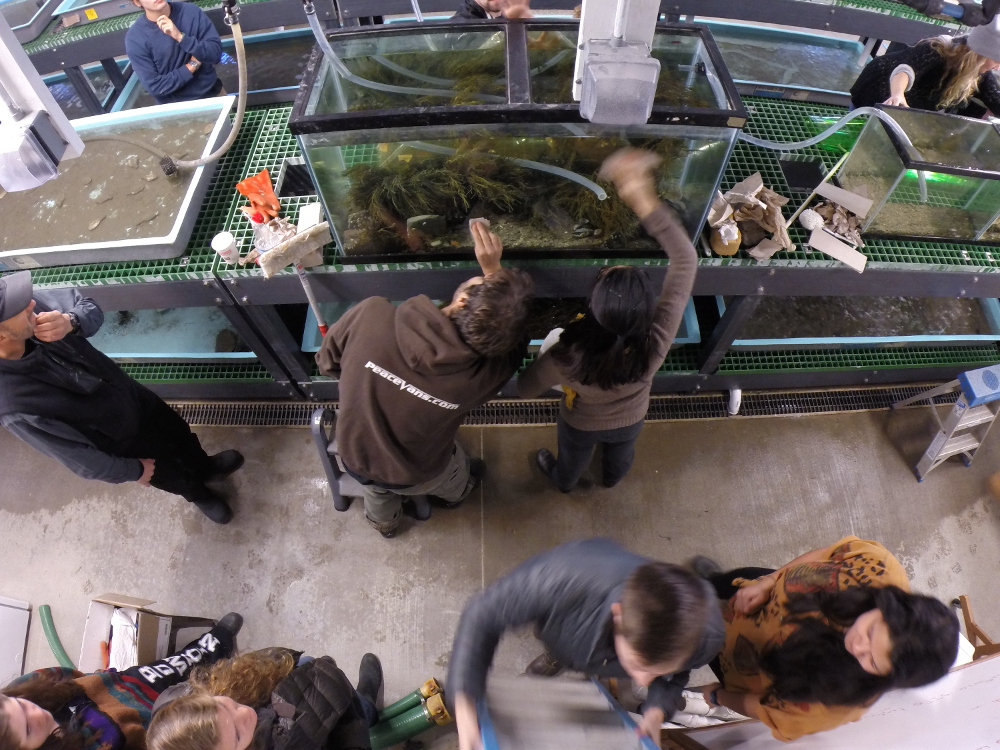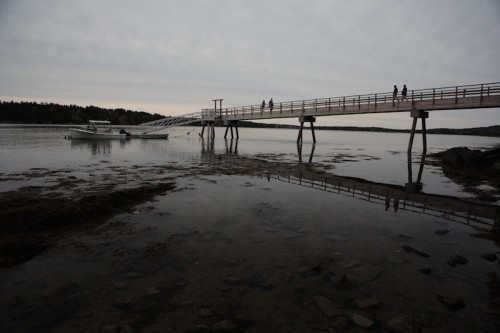Bowdoin Wins NSF Grant to Study Climate Change in the Sea
By Rebecca Goldfine
With help from a new National Science Foundation grant, Bowdoin will soon be able to conduct more detailed and sophisticated studies of the effects of climate change on the oceans.
Bowdoin’s Coastal Studies Center, on Orr’s Island, will use the $214,000 grant to establish new experimental capacity to mimic different sea conditions that could arise from warming temperatures and acidification. The system will be housed in the existing marine laboratory, and will consist of four modules that can independently control up to 100 gallons of flowing seawater. When the system is up and running — by the end of next summer — researchers will be able to precisely set variables such as pH levels, temperature and oxygen levels to study climate change on a variety of marine organisms and ecosystems.
The grant will also pay for a new environmental monitoring platform in Harpswell Sound, mounted on the Coastal Studies Center’s research pier. The underwater sensors will continuously monitor climatic variables, such as temperature, salinity and the amount of carbon dioxide in the water, streaming this data to a public website 365 days a year. This new data compliments and extends data provided by the Bowdoin Buoy, which is seasonally deployed in lower Harpswell Sound. The new coastal information will be available for public viewing and downloading via a website.
Such detailed information about conditions in Harpswell Sound will help guide future experiments in the marine lab, according to Dave Carlon, director of the center. “Because we didn’t know what was happening in the intertidal environment in Harpswell Sound, we couldn’t design experiments replicating it,” he explained. “Now we can do experiments on actual changing conditions.”

The marine lab is already outfitted with a robust seawater pumping system that delivers 100 gallons of seawater every minute of every day from Harpswell Sound to the lab, and pumps it back out again. The research pier is the foundation for the plumbing and pumps, and was completed in 2006 with a grant from the National Science Foundation and a donation from Geoffrey Rusack ’78, P’13 and Alison Wrigley Rusack P’13. “The research pier and seawater system we have in place is world class, and combined with the new improvements make the marine laboratory a very attractive place for our Bowdoin community and outside researchers,” Carlon said.
When, by next fall, Bowdoin’s new pier monitoring system is up and running, it will be part of small handful of stations in the Gulf of Maine. These monitoring systems reflect a larger international trend to build field laboratory networks based on many “sentinel” sites. “Climate change in the sea will come with lots of regional coastal variation that is likely to be detrimental to local communities and fisheries,” Carlon said. “There is growing activity in the United States to document coastal variation so that we can understand the regional drivers of changing temperature, ocean acidity and ecosystem productivity.”
He continued, “The offshore ocean environment is changing quite quickly, but models suggest even more change for the shallow coastal marine environments.” Indeed, the Gulf of Maine is being transformed by climate change faster than any other ocean body in the world.
The Bowdoin Coastal Studies Center is an educational and research site for students, faculty and visiting researchers. Its location on the southern boundary of the Gulf of Maine facilitates the study of this body of water, which is threatened by overfishing and invasive species as well as climate change.
The NSF grant, No. 1522545, RUI: Experimental Seawater Laboratory at the Coastal Studies Center Bowdoin College, is a joint effort between the biology and earth and oceanographic departments and was written by Carlon and Assistant Professor of Earth & Oceanographic Science Michele LaVigne.



